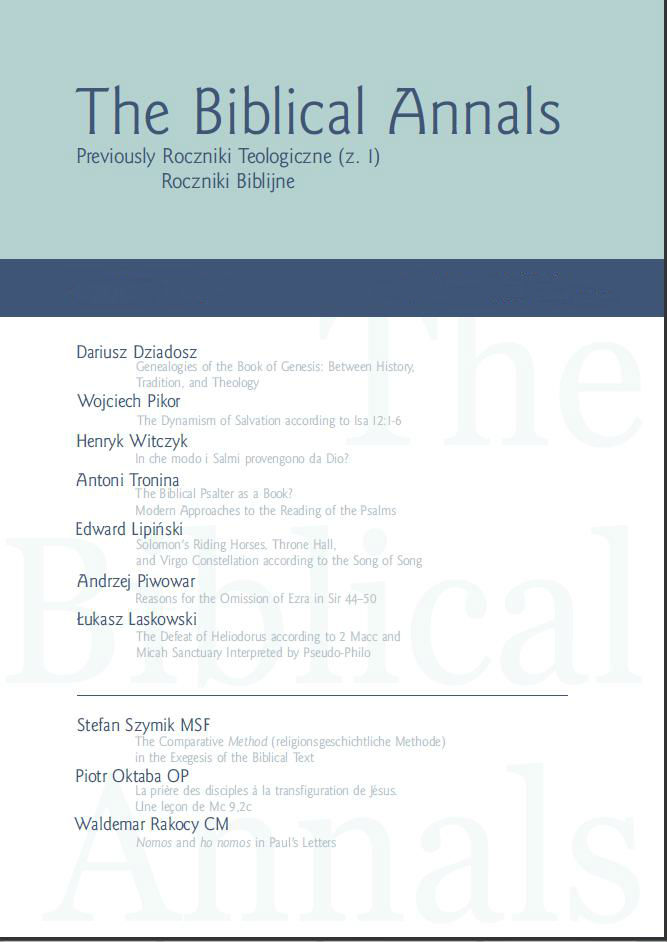Hittites et Houttites dans la Bible
Hittites and Hurrians in the Bible
Author(s): Edward LipińskiSubject(s): Christian Theology and Religion
Published by: Katolicki Uniwersytet Lubelski Jana Pawła II - Wydział Teologii
Keywords: Old Testament; Hittites; Hurrians; Horites; Uriah the Hittite; Nuzi; Ararat; Urartu; ewri; Awarnah/Araunah; Batshev
Summary/Abstract: Hittites appear quite often in the Bible, as usually translated, and they happen to be related, even nowadays, to the Hittite Empire of the Bronze Age. This understanding of the biblical texts does not take historical data into account. While some passages may allude to Neo-Hittite states of Syria or be inspired by the cuneiform use of Hatti in Iron Age II, other mentions must have referred originally to the North-Arabian tribe Hatti, living in southern Canaan or the Negev and known from the toponymic list of Shoshenq I (10th century B.C.) and certainly from the inscriptions of Tiglath-pileser (8th century B.C.). The case of “Uriah the Hittite” is somewhat different, because the man in question was ewri Hutiya, bearing the Hurrian title “lord” or “king” and a Hurrian personal name. He was apparently continuing the lineage of Hurrian princes of Jerusalem known from some Amarna letters of the 14th century B.C. Hurrian political and military influence in Canaan is well attested, but the Nuzi analogies with patriarchal narratives hardly prove a characteristic Hurrian impact on Israelite customs and the early Hebrew literature. The role of Hurrians, called Horites in the Bible, could no longer be understood properly by the redactors of biblical books, but the realm of Urartu in Iron Age II Anatolia seems to have been known quite well in scribal circles.
Journal: The Biblical Annals
- Issue Year: 2/2012
- Issue No: 59
- Page Range: 9-25
- Page Count: 17
- Language: French

